Willow fish trap is a traditional type of fish trap crafted from bent willow branches intricately woven together. Resembling a basket with a small opening at one end to lure in fish, the willow fish trap can be utilized in both freshwater and saltwater environments, depending on the type of fish you aim to catch.
In this article, we will guide you on how to make a willow fish trap with just a few basic materials and tools. Have a read!
1. Steps to make a willow fish trap
The willow fish trap is a traditional type of fish trap crafted from bent willow branches intricately woven together. To make a willow fish trap, you’ll need the following materials and tools:
- Soft willow branches, approximately 1.5 meters long, with a diameter of about 1 cm.
- Craft scissors or pruning shears for cutting willow branches.
- Twine or nylon string for tying the trap.
The steps to make a willow fish trap are as follows:
Step 1: Gather willow branches
Collect long and flexible willow branches. The number of branches will depend on the size of the fish trap you want to create.
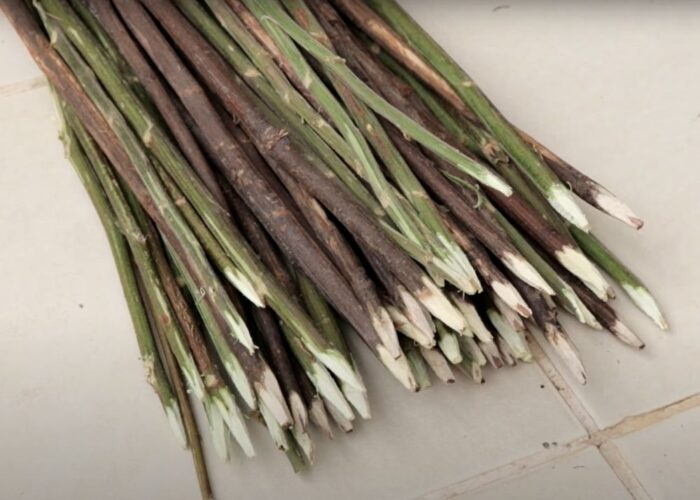
Step 2: Prepare the main frame
Choose a long willow branch and bend the end into a circular shape. This will form the mouth of the trap. Secure the end tightly with twine or nylon string.
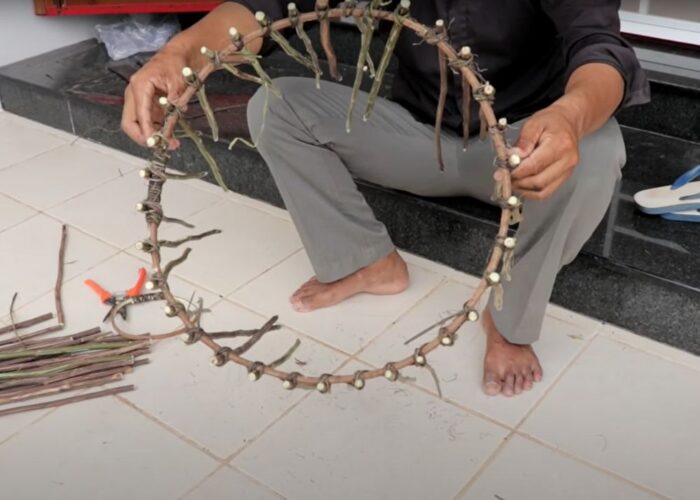
Step 3: Weave the uprights
Take the remaining willow branches and weave them in and out of the circular shape created in Step 1. Weave from top to bottom, forming a hollow cone. Ensure the branches are tightly woven to prevent them from falling out when trapping fish.
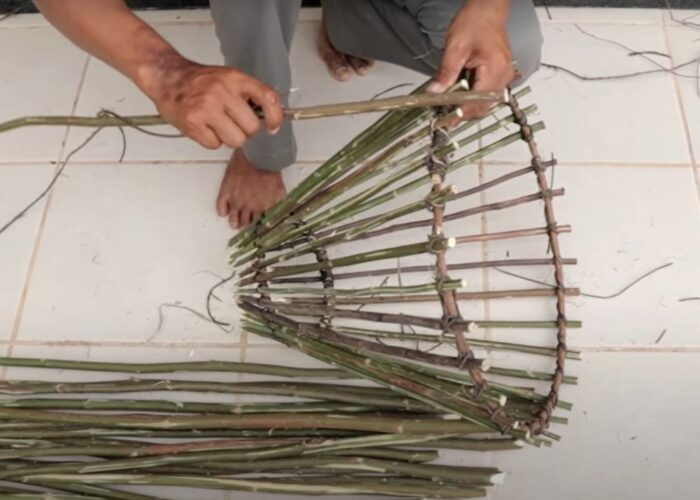
Step 4: Weave create an entrance for the fish
When the weaving reaches about 2/3 of the trap’s length, create an entrance for the fish. Cut a small round hole in the woven cone, then bend another willow branch into a smaller circular shape than the mouth of the trap. Insert this circle into the cut hole and continue weaving the willow branches around to create a smaller cone connected to the larger cone.
Note that the entrance should be smaller than the mouth of the trap to prevent fish from escaping.
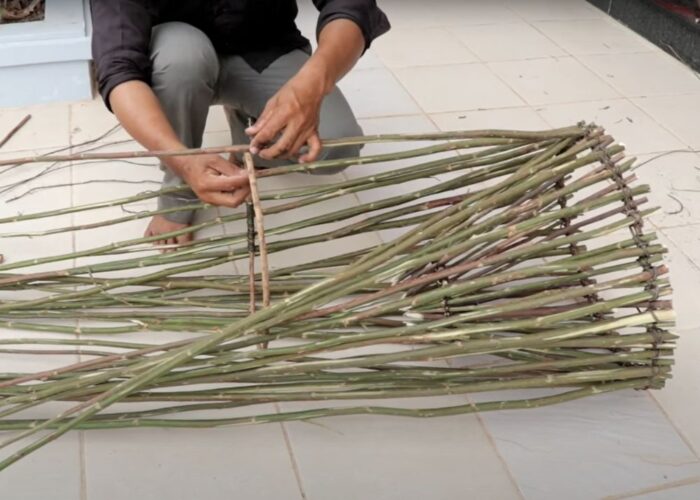
Step 4: Trim excess branches
Continue weaving the willow branches until completing the larger cone. Then, trim any excess branches and securely tie them together. You now have a complete willow fish trap.
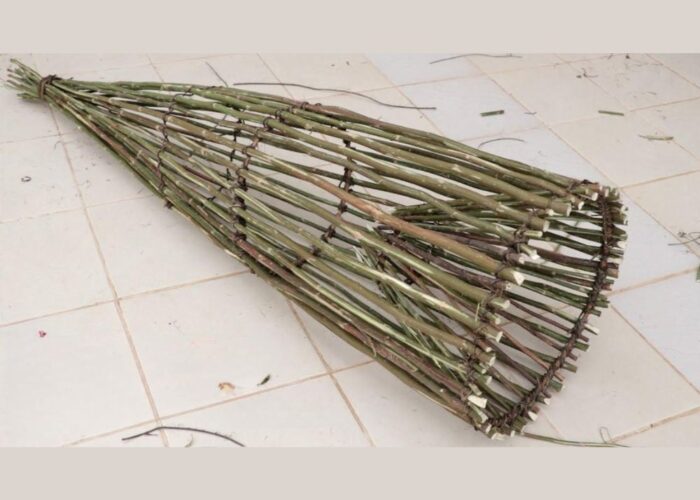
To use the willow fish trap, simply place it in areas with a high concentration of fish, such as rivers, lakes, or ponds, and wait. You can add bait inside the trap to attract fish. When ready to retrieve the fish, pull the trap up and invert it. This traditional method of crafting a willow fish trap provides an effective and simple way to catch fish in various water environments.
2. FAQs
2.1 How does a fish basket trap work?
The trap has the shape of a basket with a small opening at one end for fish to swim into but not out of. It is placed in either deep or shallow water depending on the type of fish intended to be caught and is filled with bait such as cheese, fish meat, or dog food.
After a while, the fish will smell the bait and swim into the trap but cannot swim back out because the small opening has sharp spikes pointing inward. The basket fish trap can catch various types of fish and keep them alive in the trap until the angler pulls it up.
The basket fish trap is a simple yet effective method for catching fish in survival situations or for food needs.
2.2 What is the best bait for a fish trap?
Some fish species may prefer different types of bait; for example, carp may favor pellets, while trout may prefer worms. It’s also essential to choose bait suitable for water conditions, such as slow-dissolving bait in cold water and fast-dissolving bait in warm water.
Lastly, understanding the fish’s feeding habits throughout the seasons is crucial; for instance, fish may eat less during winter and more during summer. Therefore, there is no straightforward answer to this question, and you need to experiment and adjust based on specific situations.
2.3 Why can’t fish escape a fish trap?
Fish cannot escape from the fish trap because the trap is designed to exploit their instincts. When fish see bait or other fish inside the trap, they swim in to eat or interact with their fellow species. However, when they want to leave the trap, they cannot find the way out.
This is because the fish trap has a specific structure, typically featuring a small entrance and a spacious interior. The small entrance allows fish to easily swim in but makes it difficult for them to swim out. The spacious interior creates a sense of safety and reassurance for the fish, making them unsuspecting. Therefore, the fish remains trapped until the angler comes to retrieve them.
If you have any further questions, don’t hesitate to send thanhcongcraft an email us at info@thanhcongcraft.com or message us at WhatsApp: +84967485411. Hope to serve you soon! Best regard!


